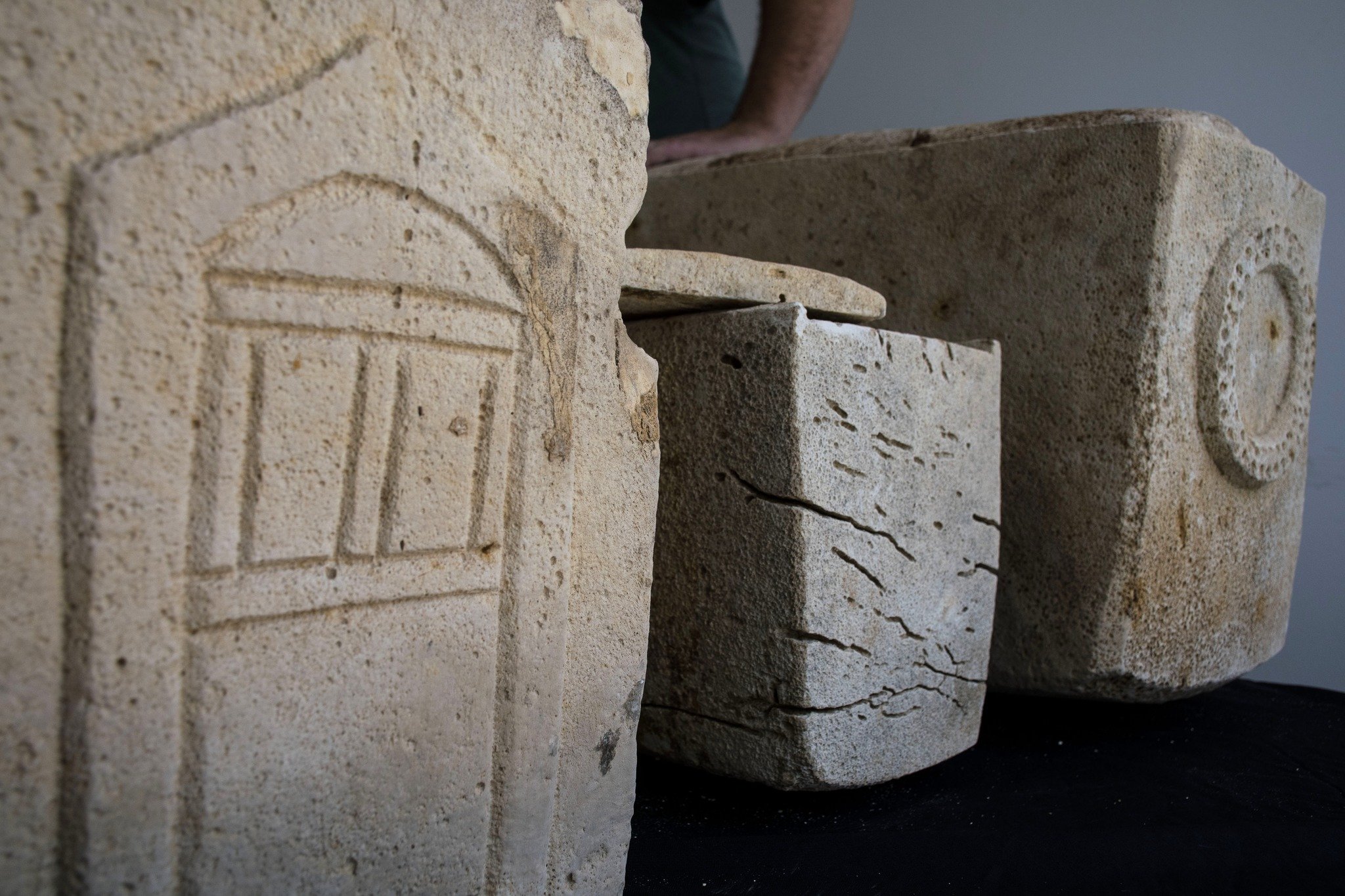
Three ancient burial chests, dating back 1,850 years, have been discovered in a construction site in Israel.
According to an announcement by the Israel Antiquities Authority, a joint operation between the IAA and local police, “carried out to prevent antiquity looting,” led to the discovery and retrieval of the ossuaries, which are believed to be from the Roman period.
The team was inspecting a site close to the village of Mashhad in Galilee, when they found found one rock-cut burial cave in a plot of land that had been “almost entirely destroyed in the course of large-scale earthworks.” In a second cave, they found the ossuaries, which they believe had been tampered with because they were empty and appeared to have been moved.
The burial chests found in the burial cave. Photo: Yoli Schwartz, Israel Antiquities Authority.
The ossuaries, described as “small rectangular chests carved in soft limestone with flat fitting lids,” were vessels used for the secondary burial of human bones after decomposition. Inspectors from the IAA, an independent government organization, catalogued and collected the ossuaries along with fragments of other chests and relics, uncovering clues of an ancient past embedded in the objects.
One coffin was inscribed with a circular wreath with drilled holes, believed to be a symbol of the deceased person’s victory over death. Similarly decorated ossuaries had previously been found in a nearby ancient town. In photos that accompany the IAA’s post, one can see glass vessels and beads that were found at the site, as well as a ceramic candle holder.
A ceramic candle holder found in the burial cave. Photo: Yoli Schwartz, Israel Antiquities Authority.
In the announcement, Amir Ganor, director of the Theft Prevention Unit at the IAA, lamented the state of the damaged cave: “The original details of the destroyed cave cannot be reconstructed, and almost 2,000-year-old cultural assets are lost forever.” However, he added that one of the caves was “mostly saved.”
Construction on the site has now stopped, as inspectors investigate further. Eli Escusido, director of the IAA, urged people to assist the IAA in its mission to “protect our national treasures and resources.” Artnet News has reached out to the IAA for comment.